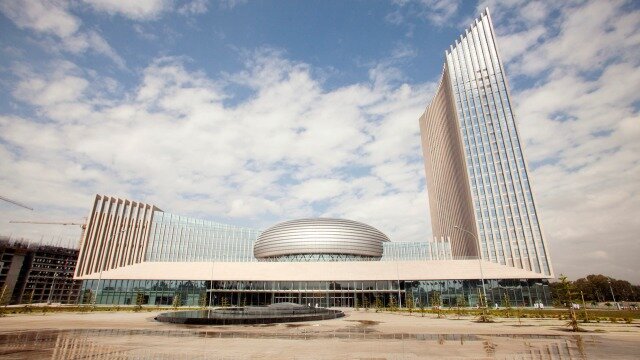A Joint World Bank Group and Sudan’s Ministry of Finance and Economic Planning Assessment on the Sudan (IPRSP)
Interim Poverty Reduction Strategy Paper. The importance of the IORSP that it is one of the basic conditions for foreign debt relief under the HIPC (Heavily Indebted Poor Countries) Initiative. In the first two parts of this review, the focus was on the issues of creating an enabling political and economic environment, agriculture as an engine of growth, human resources and education. In this part the attention is on health, water and sanitation, social welfare, security and protection, governance and other relevant issues.
IPRSP Pillars
I. Promotion of Economic Growth and Employment Creation:
The emphasis is on growth in agriculture and livestock, manufacturing and services, and the role of the private sector. Building on the key pillars of governance, reintegration and human resources, the IPRSP discusses its strategy for employment creation growth under four sub-pillars: enabling macroeconomic environment for growth; enabling environment for private sector growth; enhancing productivity and growth in agriculture; strengthening economic services for recovery and growth; and protection of natural resources and the environment.
II. Developing Human Resources: The focus is on the role of investment in human development to build and enhance the population capabilities through education and better health,
emphasis on closing the disparities in access to opportunities for self-improvement for women and the very poor, and reducing the inequality in human development outcomes between states and regions.
III. Reintegration of IDPs and Other Displaced Populations:
Support systematic approach to end the dependent status of these displaced populations by providing permanent access
to shelter and sustainable livelihoods, to economic and social opportunities such as land, credit, market places, schools and health facilities, and participation in civic activities and decision-making in the communities.
IV. Strengthening Governance and Institutional Capacity:
Priority on building a strong, inclusive, transparent and effective state and the institutional capacity to govern and deliver public services to the population. Important elements of this good governance include effective public financial management and decentralization, peace and security, fighting corruption, promoting human rights, and improving justice and law enforcement.
A Joint World Bank Group and Sudan’s Ministry of Finance and Economic Planning Assessment on the Sudan (IPRSP) Interim Poverty Reduction Strategy Paper. The importance of the IORSP that it is one of the basic conditions for foreign debt relief under the HIPC (Heavily Indebted Poor Countries) Initiative. In the first two parts of this review, the focus was on the issues of creating an enabling political and economic environment, agriculture as an engine of growth, human resources and education. In this part the attention is on health, water and sanitation, social welfare, security and protection, governance and other relevant issues.
Background
Sudan adopted an interim poverty reduction strategy to be implemented during the period 2012–2014. Preparation of the IPRSP featured extensive consultations with Government, non-government organizations, civil society organizations as well as members of the international community. The IPRSP was approved by the Council of Ministers and Parliament in July 2012. The Government has stated that priorities in the IPRSP informed the 2012 budget as much as possible.
The IPRSP was based on the 2009 National Baseline Household Survey (NBHS) that provided the base for a first comprehensive assessment of living conditions in Sudan since 1978.
The household survey data provided a rare opportunity for analyzing poverty and inequality profile of the country, establishing a sound benchmark for poverty monitoring, and evaluating the welfare impacts of policies and programs.
According to the IPRSP, poverty is high and largely a rural phenomenon.
Based on the 2009 National Baseline Household Survey (NBHS) the poverty incidence was estimated at 46.5 percent. About one in two Sudanese, close to 14 million people, lived in poverty in 2009. The consumption of the poor was, on average, SDG 74 per capita, or 65 percent of the national poverty line set at SDG 114 per month per capita. The figure signals that poverty is deep in Sudan with
most of the poor relatively far below the national poverty line. The poverty rate is significantly higher in rural areas (58 percent) than in urban areas (26 percent), highlighting the inverse relationship between poverty and urbanization in Sudan. While rural areas account for about two-thirds (64.4 percent) of the population, they account for almost 80 percent of Sudan’s poor.
Poverty varies markedly across states.
The poverty rate varies from 26 percent in Khartoum state; to above 60 percent in some states such as North Darfur.
Poverty also varies markedly across localities/Mahalyias. For example, in Darfur, where the largest poverty rates are recorded, there are still better off Mahalyias: El Geneina (19 percent), Nyala (24 percent), and Azoom (33 percent). Similarly, in parts of the country where poverty rates are quite low at the state level, such as River Nile, and Northern and Kassala, we find Mahaliyas which witness high levels of poverty: El Damar (40 percent), Algolid (46 percent), Aldaba (52 percent), Talkook (63 percent), and Hamashkoreeb (79 percent).
Several lessons were drawn in the IPRSP regarding correlates of poverty. Agriculture is the main source of livelihood for the Sudanese poor. More than 60 percent of households in the poorest quintile rely on agriculture as their main livelihood in contrast to only 20 percent of households in the wealthiest quintile. Poverty rates also correlate highly with education levels.
Poverty rates
are highest for those living in households whose head has no education and are also high for those whose heads have only some primary education and those who report that khalwa (pre-school) is their highest level of education completed. Besides direct linkages with poverty, education outcomes are closely linked with employment outcomes. The 2009 NBHS data shows that individuals who attain higher education are significantly more likely to be employed than individuals who have attained primary or secondary education. Employment is essential for reducing
poverty. Lack of vibrant private sector is one of the main contributing factors to scarcity of jobs.
Many poor households lack adequate access to some basic health services as well as infrastructure and utilities.
The NBHS data suggest that many poor Sudanese households lack adequate access to public utilities and infrastructure. Access to improved water, electricity and mobile phone by the poorest 20 percent of the population is limited at 20 percent. Even for the richest 20 percent, accessibility is below 50 percent. Most of the Sudanese households rely exclusively on firewood for cooking and heating. Moreover, the poorest 20 percent spend almost 8 percent of their total consumption on utilities, compared to less than 5 percent for the richest 20 percent. There is no appreciable difference in poverty by gender.
The incidence of poverty is not statistically different between men and women and female-headed and male-headed households. This finding makes Sudan unique and different from many developing countries where women and female-headed households are more vulnerable to poverty. However, this finding is based on income poverty and does not take into account many other important dimensions of poverty and gender disparities in Sudan.
Based on the analysis of the poverty situation as outlined above, the IPRSP suggested rapid and sustainable shared economic growth to reduce poverty. It focuses on actions to build the foundation for rapid broad-based economic growth, structural transformation, and diversification of the economy over the medium and long term.
The actions include establishing a capable state,
with good governance and capacity for effective public actions; stabilizing the population and communities destabilized by conflicts; building human resources as an important pillar of the foundation for development; and provide an enabling environment for rapid and sustainable economic growth. The strategy is clustered under four broad pillars: (i) promote economic growth and employment creation; (ii) develop human resources; (iii) reintegrate IDPs and other displaced populations; and (iv) strengthen governance and institutional capacity of the public sector.
Although the IPRS design called for four pillars, the scope of the IPRSP program was ambitious in relations to allocated time, resources, and available capacity.
The IPRSP program focus was fairly broad, covering 19 objectives/sectors (e.g. agriculture, education, health infrastructure water safety net, natural resources, business environment, PFM, property rights, human rights, decentralization, and conflict resolution) each with several sub-objectives. This in turn led to proliferation of objectives and policy measures. The IPRSP Policy Matrix included some 30 objectives and sub-objectives as well as about 100 policy measures (Annex 1, IPRSP Policy Matrix). This ambitious program is expected to be implemented within a three year period (2012–2014), with limited domestic resources, following the loss of oil and uncertain international community support as well as weak implementation capacity.
More than three years have passed since the inception of the IPRSP and several changes took place. National, state, and sub-state level poverty estimates based on 2008 Census and 2009 (NBHS) need to be updated to reflect recent developments. While these estimates are useful for subse-
quent poverty analysis, they do not convey a valid picture of the country in 2015. Many developments have taken place since 2011, when Sudan’s economic fortunes have changed with the secession of South Sudan and the loss of a larger share of the oil revenues that fueled Sudan’s economic growth during the 2000s. The conflict in Darfur, Blue Nile and South Kordofan has interrupted development efforts, aggravated service delivery function, and affected main sources of livelihood. All of these factors have adversely affected the poverty situation and necessitated updating poverty estimates.
The Government in its continuous endeavor to address the poverty in the country is moving toward updating the NBHS and preparing a PRSP. Work has already started in conducting a new house-hold survey with assistance from the AfDB. In line with the National Statistical Development
Strategy, Central Bureau of Statistics, the new household survey was designed in 2012. The survey started after a good preparation and statistical capacity building. The survey covers all the states and planned to be completed by February 2015. However, it has faced several constraints that have delayed its completion.
Prior to embarking on the PRSP, the Government in collaboration with developing partners decided to assess the status of implementation of the IPRSP and the progress towards poverty reduction during the implementation period of the IPRSP (2012–2014) with a focus on all levels of the results chain.
The IPRSP status report which is expected to cover achievements and obstacles towards poverty reduction will draw lessons learned to inform the preparation of the PRSP.
-
Productive Families Support in the National EconomyNext >


